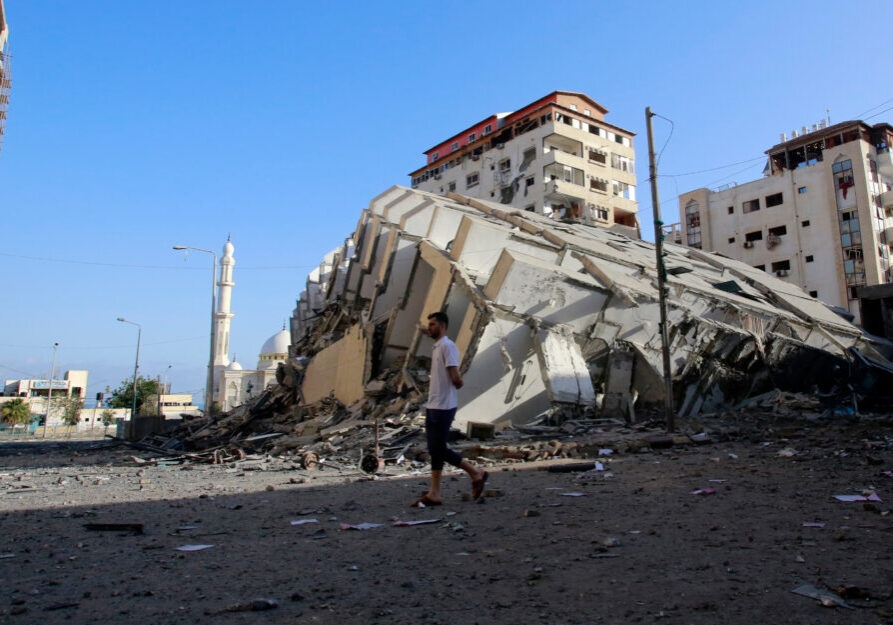Australia/Israel Review
Palmer vs Goldstone: lessons learned
Sep 26, 2011 | Gerald Steinberg & Gidon Shaviv
Gerald Steinberg & Gidon Shaviv
The blog “Lawfare” began its posting on the Palmer Report – entitled “The UN vindicates Israel” – by stating that the title was neither satire nor an April 1st joke. This tongue-in-cheek reference is indicative of the low expectations of objectivity in any UN report concerning Israel.
Criticism of Israel is usually the foregone conclusion of any UN commission, particularly when human rights or humanitarian issues are involved.
However, the recent Palmer Commission report deserves special notice. It investigated events surrounding the deaths of self-styled “peace activists” who were attempting to run an Israeli naval blockade on Gaza in May 2010.
Compared to previous reports, it was evenhanded to an almost unprecedented degree. The Commission concluded that the Israeli blockade of Gaza was legal, although it criticised Israel for what it said was disproportionate use of force against the members of the IHH organisation who attacked the Israeli commandos boarding the ships. This was a striking contrast to the notoriously one-sided, UN-commissioned Goldstone Report, which even Judge Richard Goldstone, its author, recently repudiated.
Several factors appear to explain the contrast between the Palmer and Goldstone reports.
The first factor is that different UN bodies were behind the two reports. The Goldstone “fact finding” Commission arose out of the UN Human Rights Council (UNHRC) which has 47 member states, including China, Qatar, Saudi Arabia and, until recently, Libya and even Iran. The UNHRC has Israel as the only country on its permanent agenda and consistently singles out Israel for condemnations.
The record shows that activities involving the UNHRC are invariably biased.
In sharp contrast, the Palmer Commission was formed under the auspices of the UN Secretary General, reporting directly to him, and not to the UNHRC, so staff and a majority of countries hostile to Israel were unable to control the events.
This structural difference meant that the two commissions had very different mandates.
Goldstone’s mandate from the UNHRC was to “investigate all violations of international human rights law and international humanitarian law by the occupying power, Israel….” The mandate was so biased that both Mary Robinson (a former UN rights commissioner and harsh critic of Israel) and former Finnish President Martti Ahtisaari refused to head the commission. Goldstone also initially refused, but agreed after claiming to have expanded the mandate to include human rights violations by all parties to the conflict.The broader mandate never received formal authorisation from the HRC, in part explaining Israel’s decision not to cooperate with Goldstone.
The Palmer Commission’s mandate, however, was straightforward and honest – to “examine and identify the facts, circumstances and context of the incident; and consider and recommend ways of avoiding similar incidents in the future.” This mandate encouraged Israeli participation.
Another factor is the difference in the makeups of the two commissions. Sir Geoffrey Palmer is a former Prime Minister of New Zealand, with no history of bias on either side. Similarly, former President Alvaro Uribe from Colombia assumed this task without a prejudicial record. The commission also included representatives from both Turkey and Israel, which further insured cooperation.
By contrast, the bias of the Goldstone Commission was obvious from the beginning. Prior to joining the commission, three members signed an Amnesty International petition calling for Israel to be investigated for possible war crimes.
The fourth (Christine Chinkin) went further and signed a public letter alleging Israel had acted “contrary to international humanitarian and human rights law.”
Goldstone later acknowledged that “If it had been a judicial inquiry, that letter she’d signed would have been a ground for disqualification.”
Finally and most importantly, the methodology and sources which the two commissions relied upon were entirely different. The Palmer Report, as per its mandate, was based mainly on reports submitted by the governments of Israel and Turkey. As a result, the analysis was informed by numerous details and a credible summary of the events. Where the Palmer Commission could not fully reconcile or verify the submissions, they modestly acknowledged this fact.
The Goldstone Report however, relied heavily on submissions from highly politicised, mainly pro-Palestinian NGOs. The claims and so-called eyewitness testimony, quoting Palestinians whose allegations could not be verified, resulted in highly dubious conclusions. Highly distorted NGO analyses of international law were also reflected in the controversial interpretations of law in the Goldstone Report. The weight given to such suspect sources is evidenced by over 500 references to NGOs in Goldstone’s publication, while Palmer cited NGOs in three places, without accepting their claims.
Overall, the structure of the Palmer Commission and its report, while not perfect, is a major improvement over Goldstone and the UNHRC’s kangaroo courts. In the future, human rights fact finding, whether on Israel or on other countries and conflicts, should build on Palmer’s solid foundation.
Dr. Gerald Steinberg teaches political science at Bar Ilan University and heads NGO Monitor; Gidon Shaviv is an Israel Research Fellow. © Jerusalem Post, reprinted by permission, all rights reserved.
Tags: Israel






